Polymyalgia rheumatica (PMR) is one of the most common systemic rheumatic diseases in older adults. Despite its prevalence, there are many gaps in the understanding of PMR, particularly regarding treatment and monitoring disease activity. However, recent breakthroughs related to PMR pathophysiology, studies of possible new therapeutics, and advances in imaging show some promise.

Presenters explored imaging and drug considerations for patients with PMR in the Monday, November 14, session Polymyalgia Rheumatica: New Tricks for an Old Disease. Claire Owen, MBBS (Hons), PhD, FRACP, CCPU, explained advances in imaging modalities for diagnosing and monitoring PMR, and Christian Dejaco, MD, PhD, MBA, discussed new steroid-sparing agents for the treatment of this chronic inflammatory disease of musculotendinous structures. The session is available for on-demand viewing for registered ACR Convergence participants through October 31, 2023, on the virtual meeting website.
Dr. Owen, Deputy Director of Rheumatology at Austin Health and a Senior Research Fellow at the University of Melbourne, Australia, detailed three imaging options—ultrasound, magnetic resonance imaging (MRI), and positron emission tomography/computed tomography (PET/CT)—and explained how being able to detect the distinctive extracapsular pathology of PMR through these modalities facilitates the diagnosis of PMR.
“I’m commonly asked by rheumatologists, ‘We make the diagnosis of PMR quite confidently, why would we need imaging to help us?’” Dr. Owen said. “The answer is sometimes we just don’t get it right, and there is a shift in diagnosis that is not uncommonly observed.”
Notably, the hybrid PET/CT has the benefit of documenting PMR’s distinctive whole-body distribution, with the added advantage of detecting concomitant large-vessel giant cell arteritis (LV-GCA).
Dr. Owen outlined several examples of disease monitoring in all modalities, noting that ultrasound is the leader at this time, but limited evidence exists in this area.
“Future efforts need to focus on the clinical significance of persistent imaging findings and their relationship to long-term outcomes such as disease relapse,” she said.

Dr. Dejaco, Professor in the Department of Rheumatology, Hospital of Brunico, Italy, addressed the risks and benefits of adding immunosuppression to steroids when treating PMR. The ACR and EULAR recommend tapering off the glucocorticoids (GCs) that are typically prescribed after a PMR diagnosis within 12 months.
Studies show 25 percent of patients are still being treated with steroids five years after their diagnosis, yet long-term use of GCs, even at a low dose, results in an increased risk of infection, Dr. Dejaco explained. There also is evidence that the risk of cardiovascular events increases with long-term steroid treatment. Risk assessment is key to understanding who is at risk for adverse events and potentially for long-term treatment, he noted.
“We need to identify those patients who are at an increased risk of relapse, because every relapse increases the cumulative steroid dose and the length of treatment,” Dr. Dejaco said.
But there is contradicting evidence regarding what factors can be attributed to increased risk.
“We definitely need more evidence and more studies to find out which are the risk factors that we can use in clinical practice to stratify our patients,” he said.
Once those patients are identified, clinicians can move forward with finding alternatives to GCs to avoid long-term treatment. Studies of tocilizumab have shown promising results as such an alternative, Dr. Dejaco said.
GCs are still the gold standard for PMR treatment, however, and Dr. Dejaco noted that screening, prevention, and treatment of GC-related comorbidities, such as osteoporosis, hypertension, and diabetes, is essential.
“We need more data on prevention,” he said. “It has not been shown so far that immunosuppressive agents are able to reduce the rate of steroid-related adverse events, and this type of data is needed to prove the efficacy of these drugs.”
Register Today for ACR Convergence 2025

If you haven’t registered for ACR Convergence 2025, register today to participate in this year’s premier rheumatology experience, October 24–29 in Chicago. All registered participants receive on-demand access to scientific sessions after the meeting through October 31, 2026.
